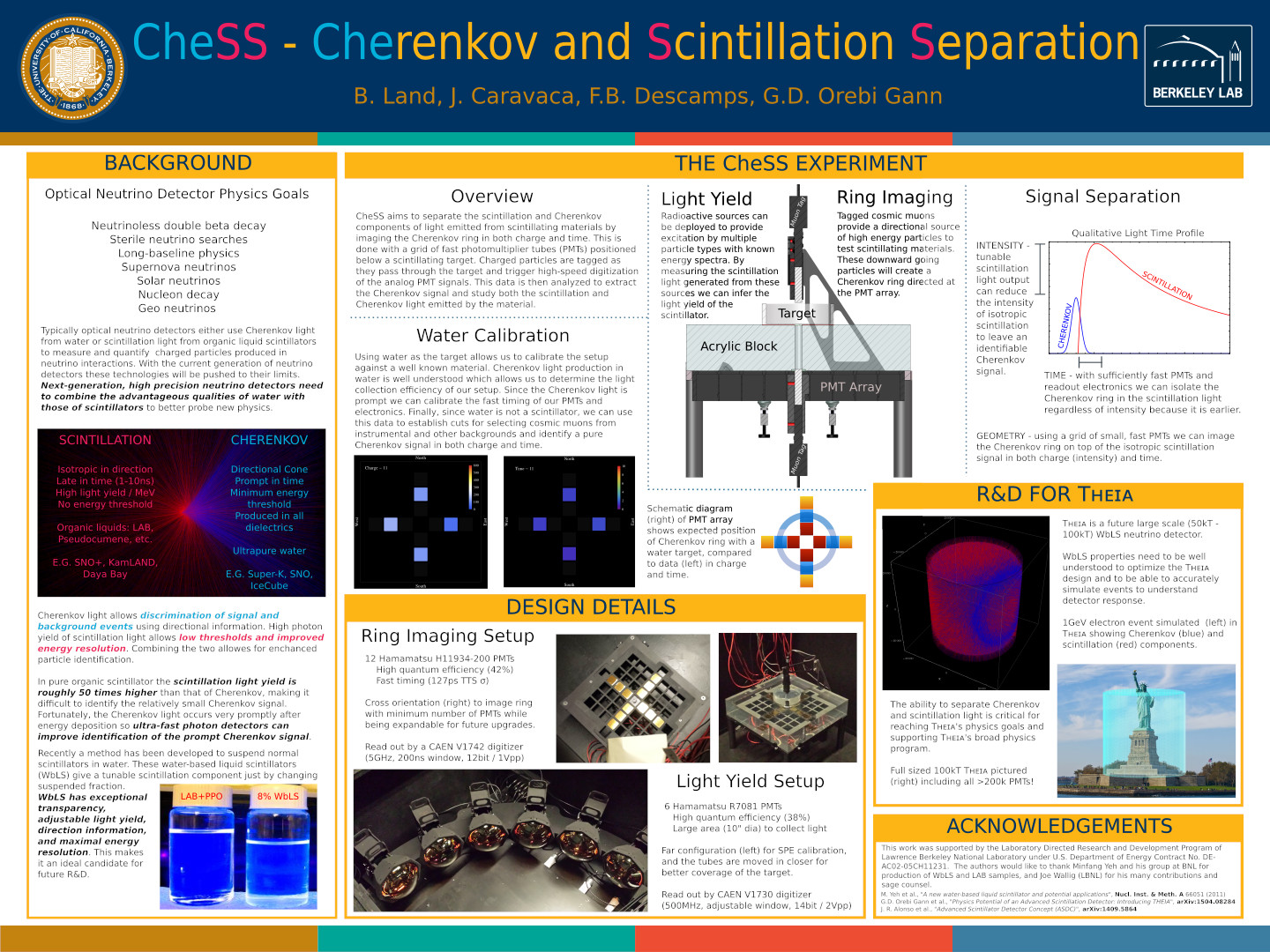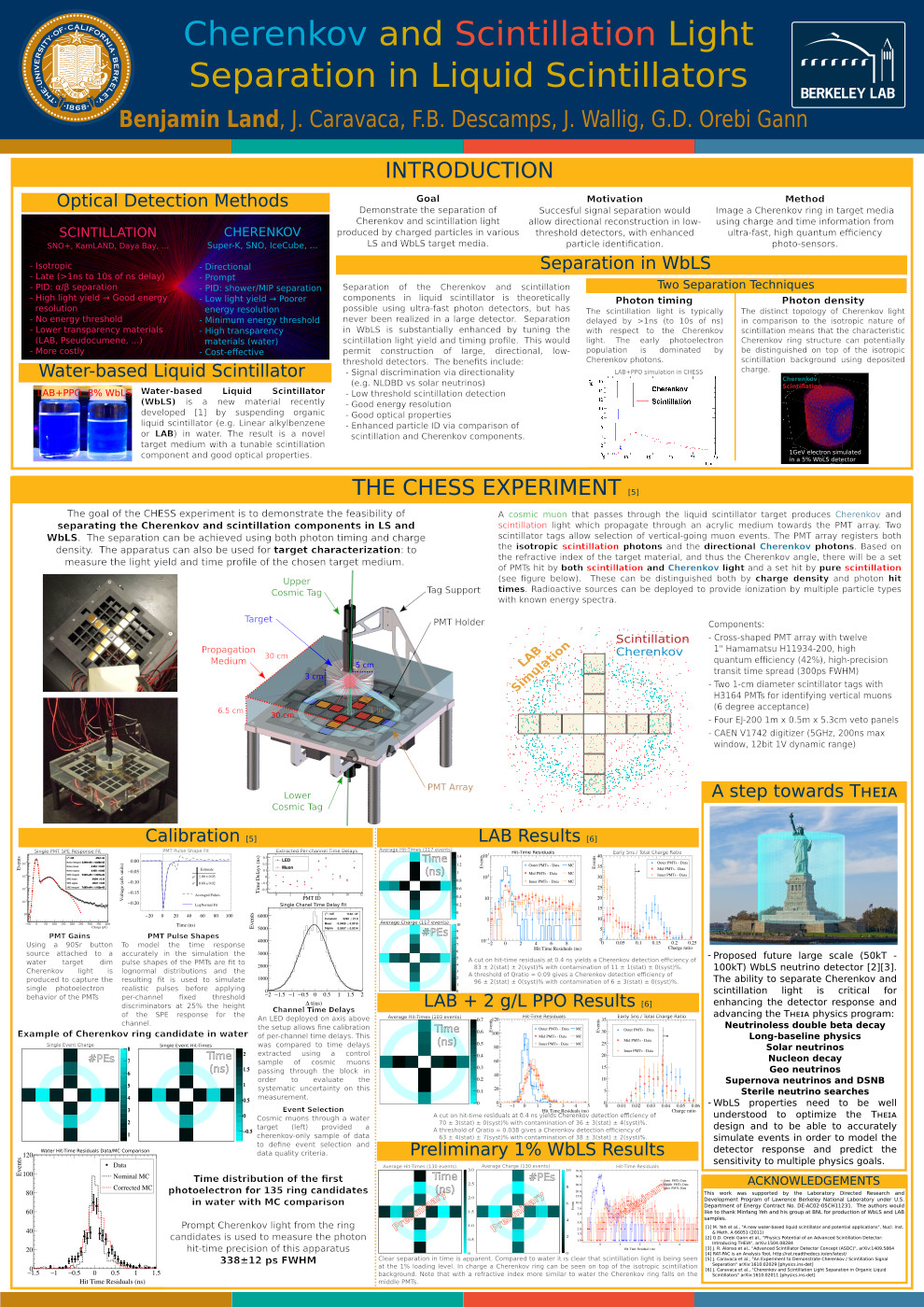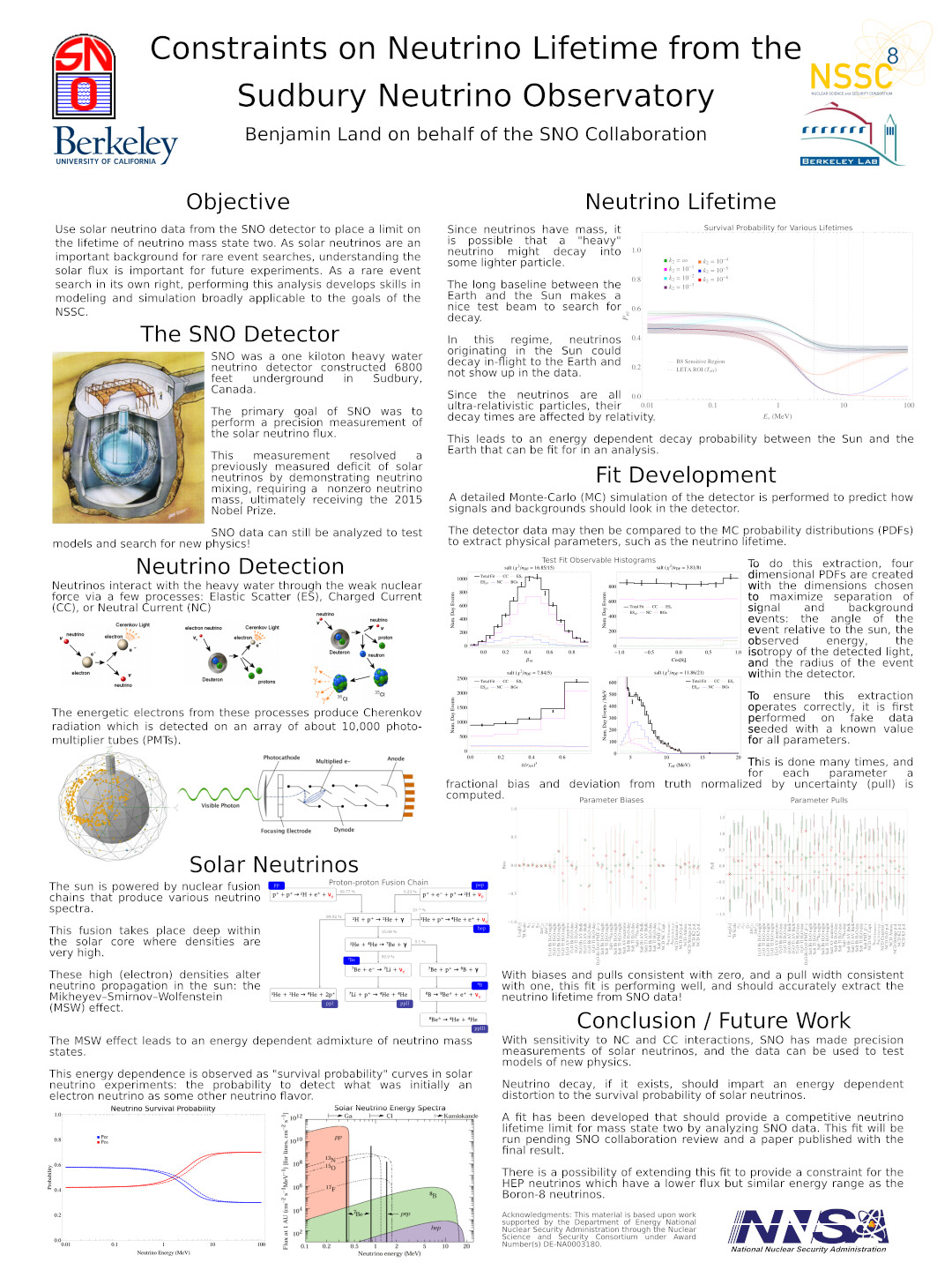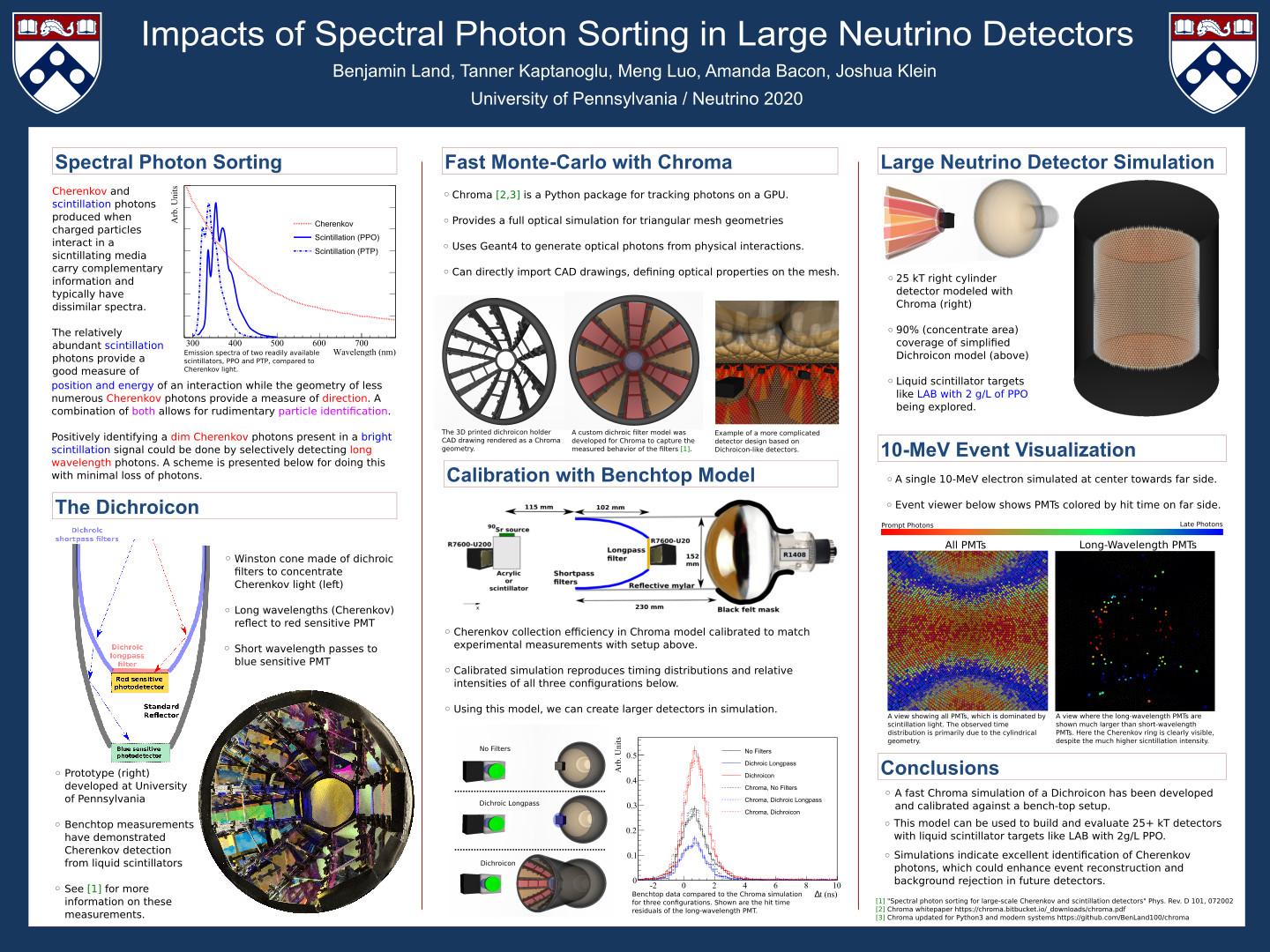One could argue that the goal of a physicist is to write and publish peer-reviewed papers, which incidentally require enough research, novelty, and scientific merit to pass peer-review at some major journal. There are, however, a lot of papers out there, so some advertising is necessary in the form of conference talks to generate interest in the physics community or public talks to inform the masses. Sometimes a more interactive discussion is a good idea, especially when discussing new approaches or preliminary results, or when a funding agency wants to show off the ongoing research to a bunch of suits who really don’t want to sit through physics talks. This is the realm of the poster, which is really just a prop to point to when talking about ideas.
I’m no graphics designer, but nonetheless had to design several posters in my time as a graduate student. I’ve heard rumors that in the past, physics departments had dedicated employees to draft figures, lay out papers, and design posters, but with the power of modern computers, graduate students are expected to know how to do all of this without any real training. Fortunately there is plenty of free software out there between Matplotlib, LaTeX, and Inkscape to help us get by. Sometimes there is even a template provided by whatever entity wants a poster, but even then artistic freedom is (too) broad.
The following sections contain (the good) posters I designed while a graduate student, and one more recently as a postdoc, in roughly chronological order. All of these posters were designed in Inkscape, with many of the figures coming from Matplotlib. High resolution PDFs can be obtained by clicking the images.
CheSS Conceptual Design
CheSS, the Cherenkov and Scintillation Separation experiment, is a benchtop experiment I designed at UC Berkeley to study the Cherenkov light emitted by organic liquid scintillators and water-based liquid scintillators (WbLS). This was an early poster in the design process of CheSS, and made great use of the official UC Berkeley color pallet.

CheSS Preliminary Results
Here, measurements of the Cherenkov light in liquid scintillators are shown from a later stage of the CheSS experiment. Nothing says actual results like real plots, and this poster delivers. Vertical posters are pretty silly, in my opinion, but certain venues have very strict requirements.

Neutrino Lifetime with SNO
One of the core physics analyses of my thesis, constraining the decay rate of the neutrino using data from the Sudbury Neutrino Observatory (SNO) dataset, was hardly underway when I was asked by the NSSC, who graciously funded part of my graduate school career, to make a poster on it. No results here, obviously, but the poster outlines the approach, and the world-leading result was published later.

Prototype LAPPD Characterization
For a short time I had an opportunity to work at Sandia National Lab to evaluate the performance of a bleeding-edge pre-production prototype of Large Area Picosecond Photon Detectors (LAPPDs) and show off the results to the NNSA, who funded the research.

Spectral Photon Sorting
Very early in my postdoc at UPenn, I put together a poster showcasing the preliminary work on a simulation of the Dichroicon using Chroma. Continuing the theme from CheSS, this benchtop device is also looking at methods for detecting Cherenkov light in scintillators but as a device that can be used in existing (or future) large detectors.
